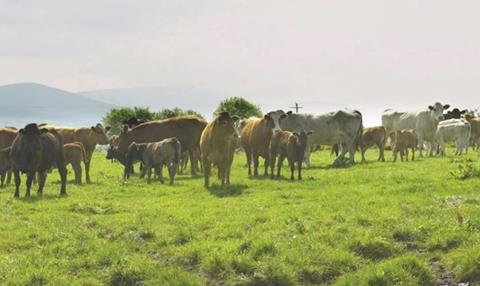The latest figures by the Agriculture and Horticulture Development Board (AHDB) reveal that prime cattle prices continue their upward trajectory, while prime cattle kill is down on last year.

According to data gathered by AHDB, prime cattle prices rose across the board in the latest reporting week, despite an increase in throughputs compared with last week.
Price movements
The report found that GB all-prime average deadweight cattle price rose by 1p to average 405.1p/kg. This is up 38.6p on the price for the same week a year ago.
The latest British deadweight prime cattle price movements, for the week ending 31st July 2021:
- All prime: 405.1p/kg up 1.0p
- Steers (overall): 406.4p/kg up 1.2p
- Steers (R4L): 415.1p/kg up 1.2p
- Heifers (overall): 405.2p/kg up 1.2p
- Young bulls (overall): 399.9p/kg up 0.8p
Overall, cull cow prices have fallen back this week, down 1.4p to average 292.4p/kg. This marks no substantial change as, the report stated, “prices have been at, or around, the 292p/kg mark for four weeks now.”
AHDB added that cows of -O4L spec did show an increase, up 2.4p to 314.4p/kg.
Throughput numbers
Throughput of prime heifers, steers and young bulls at British abattoirs was estimated to be 32,100 head for the week. This, the report stated, was 6% higher than the week before, but still down on the same week last year (-2%).
AHDB reported that cow kill at GB abattoirs was estimated to be 10,100 head during the week. While this is up 7% on the week before, it is down -3% on the same week last year. For the year-to-date, estimated cow slaughter stands at 301k head, down 5% on the same period in 2020. Unlike prime slaughter, the report added, cow slaughter is also down on 2019 (-5%) and the five-year average (-3%).
With year-to-date prime cattle kill down on last year (-3%), AHDB stated that the figures must be considered amongst the “unusual” records of 2020. 2021 slaughter so far, the report estimated, is at 989k head.
AHDB added: “This is slightly above the levels recorded in each of the years from 2016 to 2019, and is, therefore, also above the five-year average, albeit by only 0.3%.”
This story was originally published on a previous version of the Meat Management website and so there may be some missing images and formatting issues.















